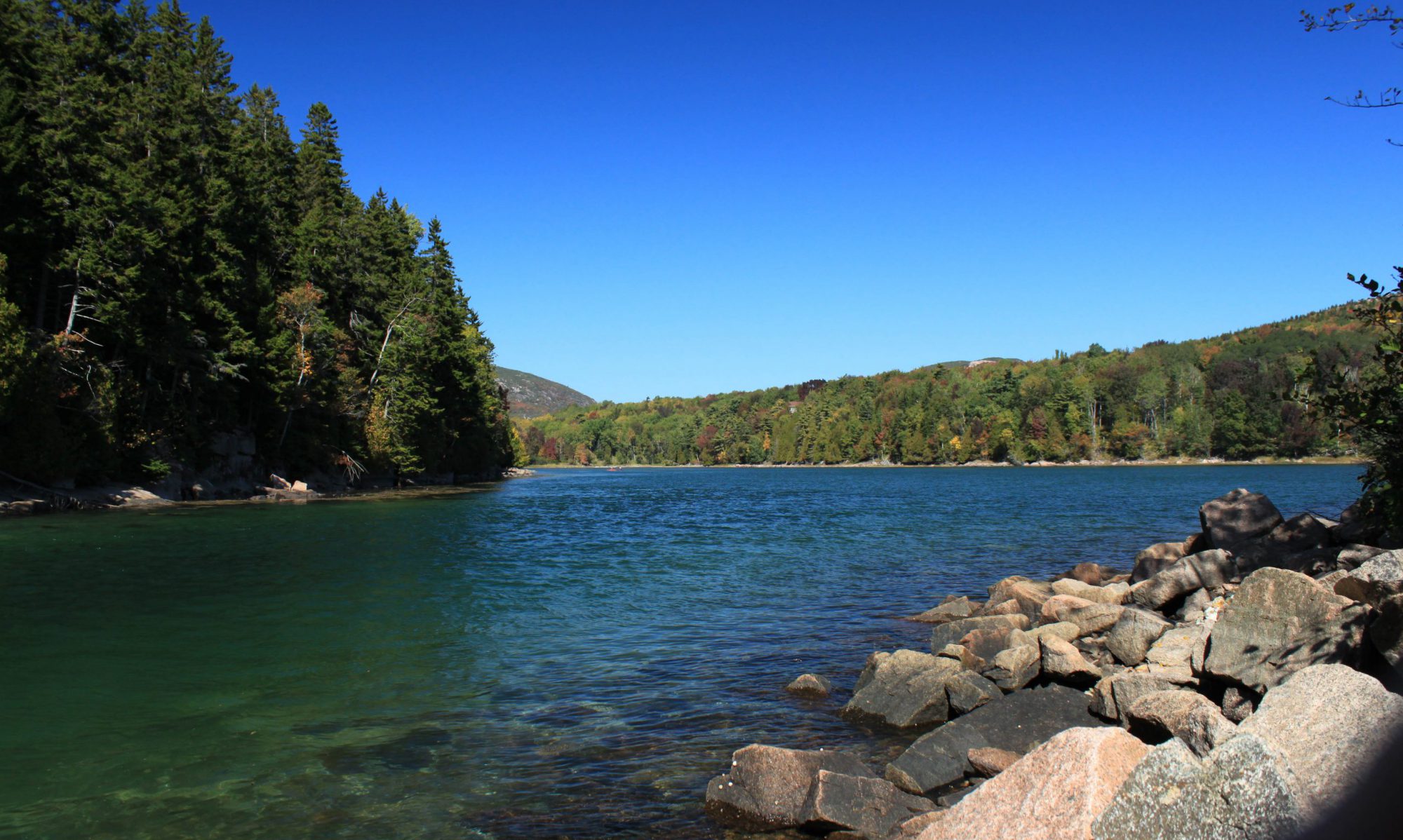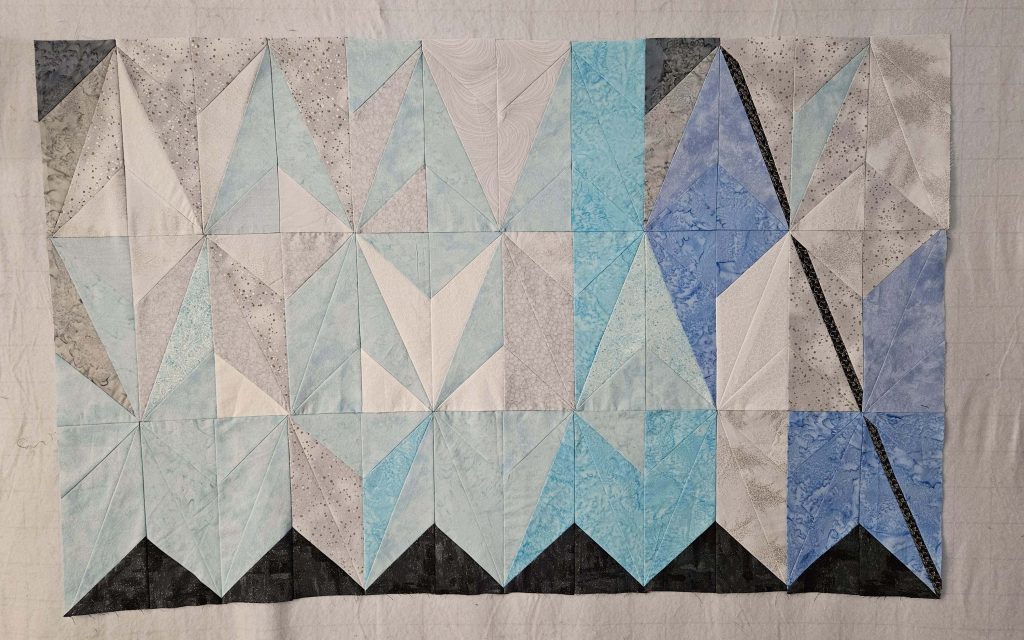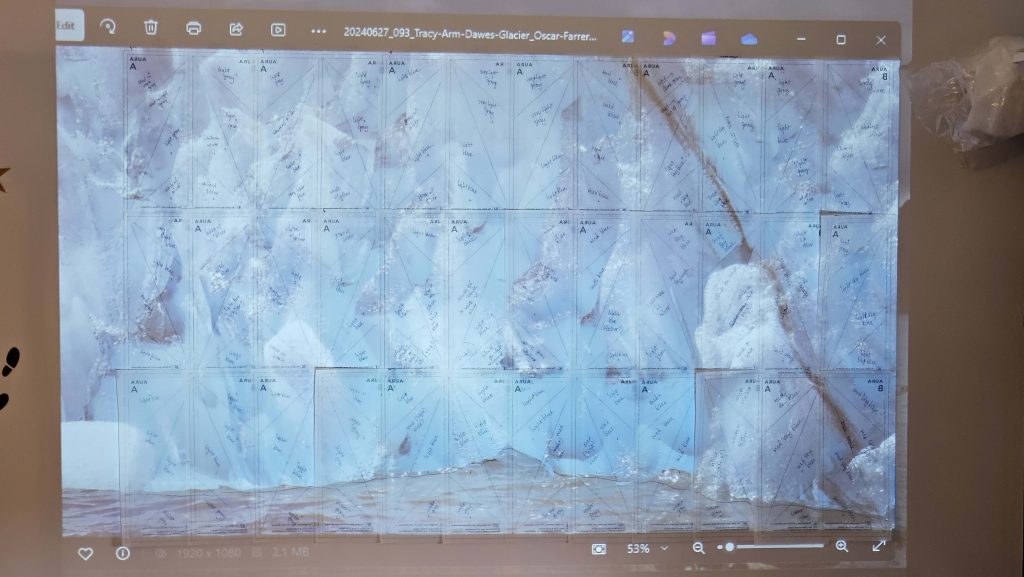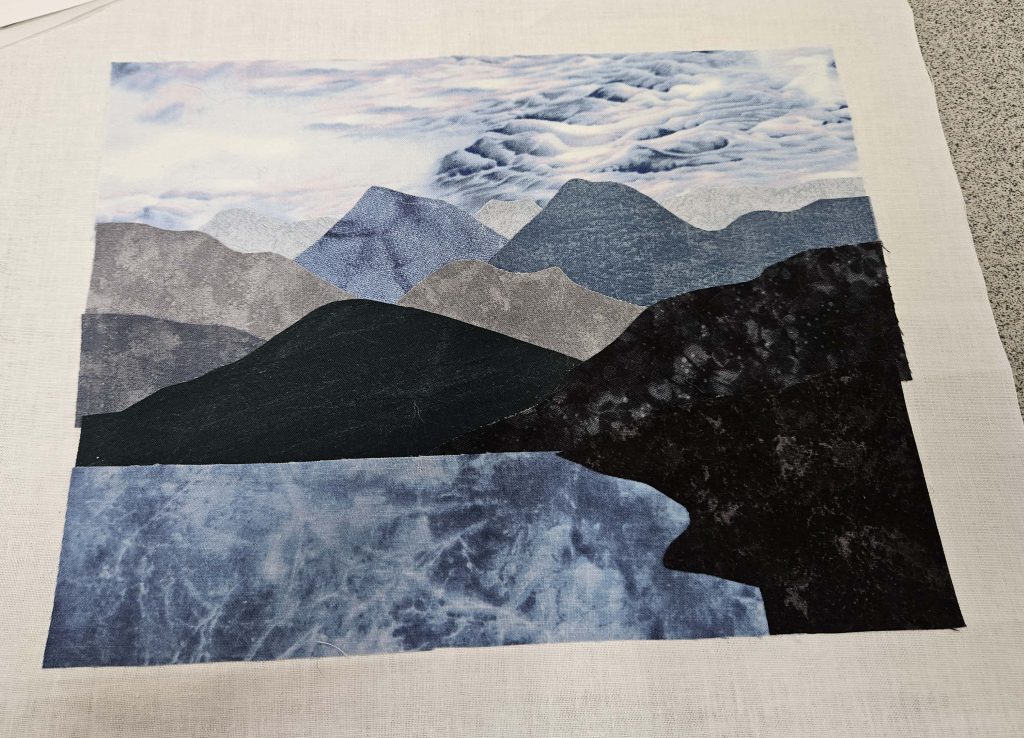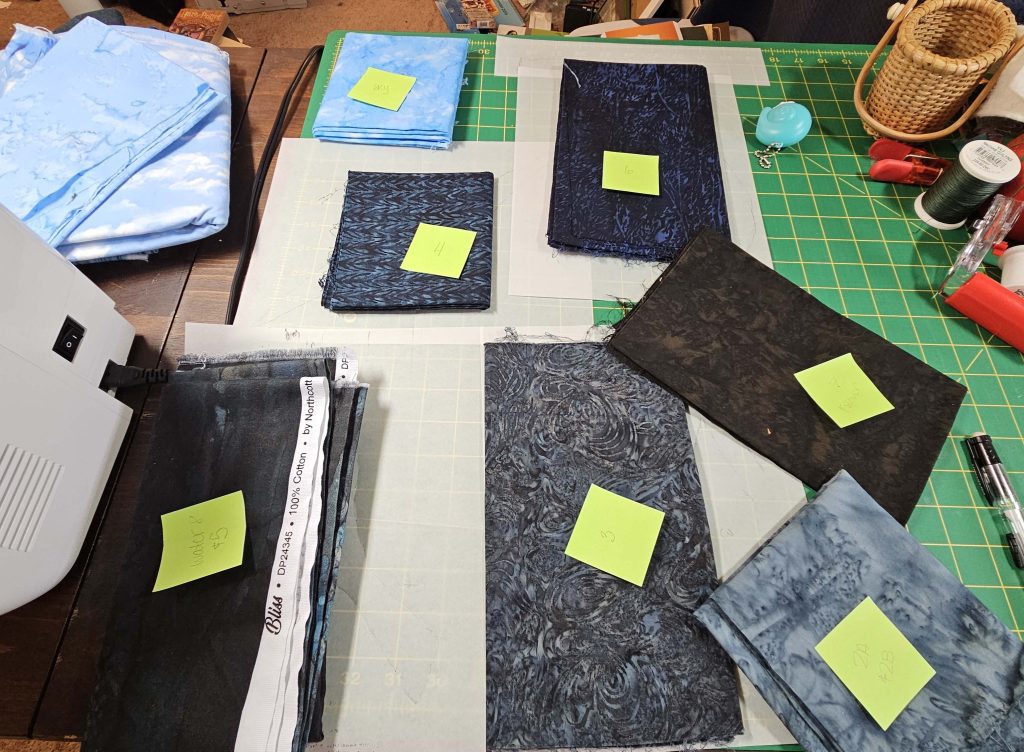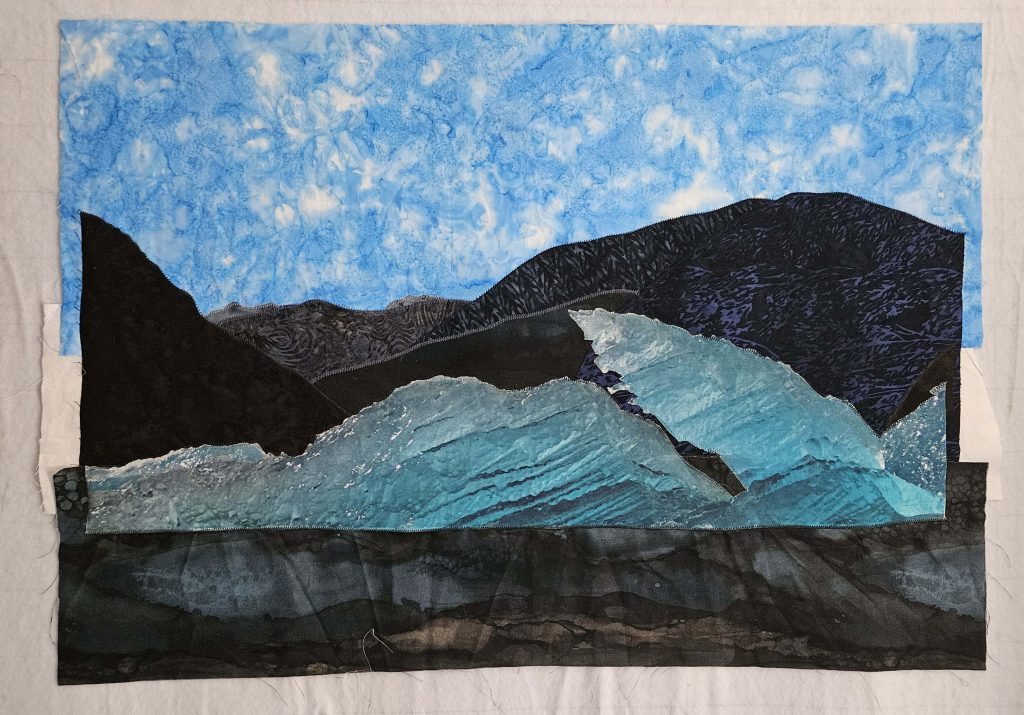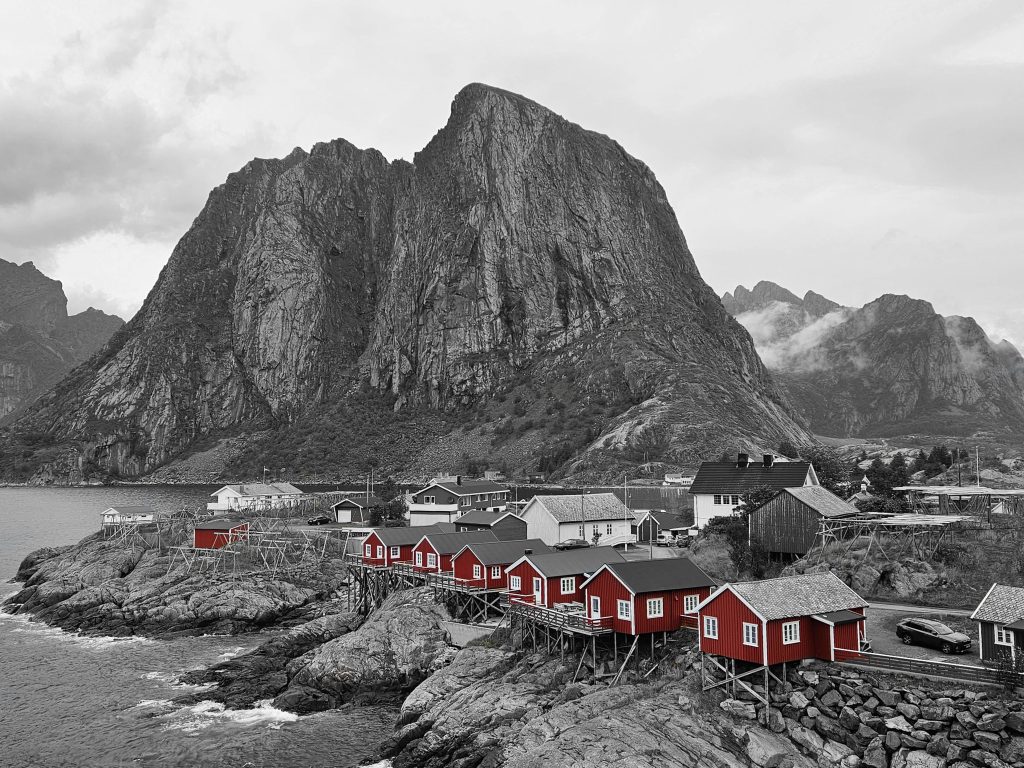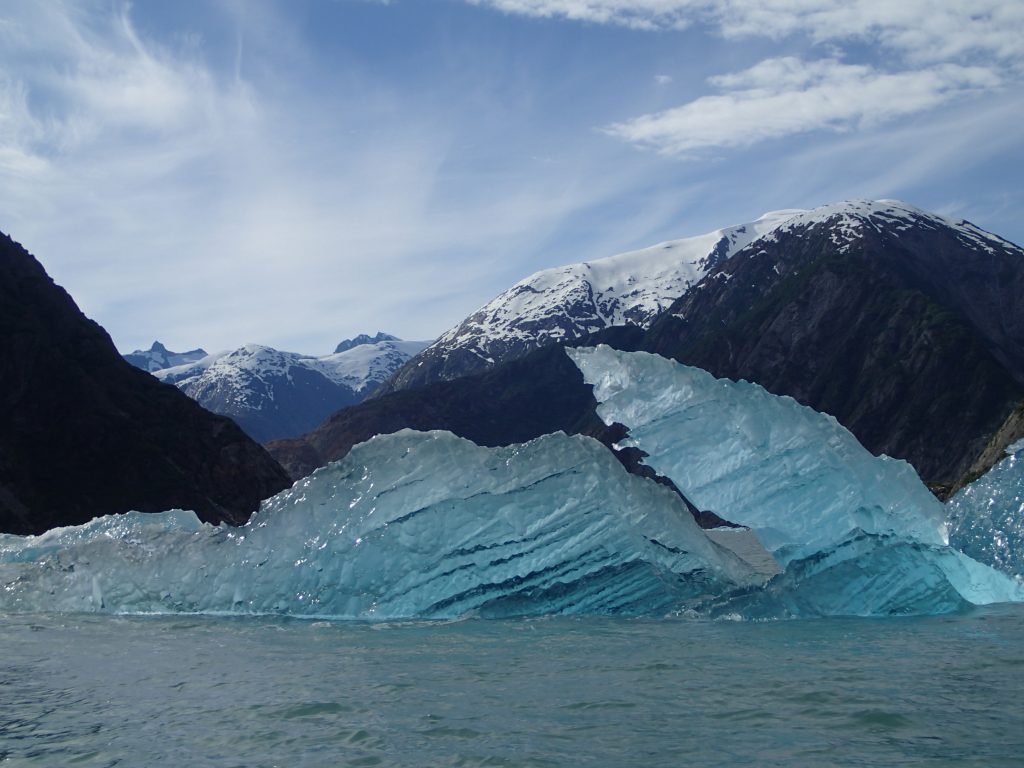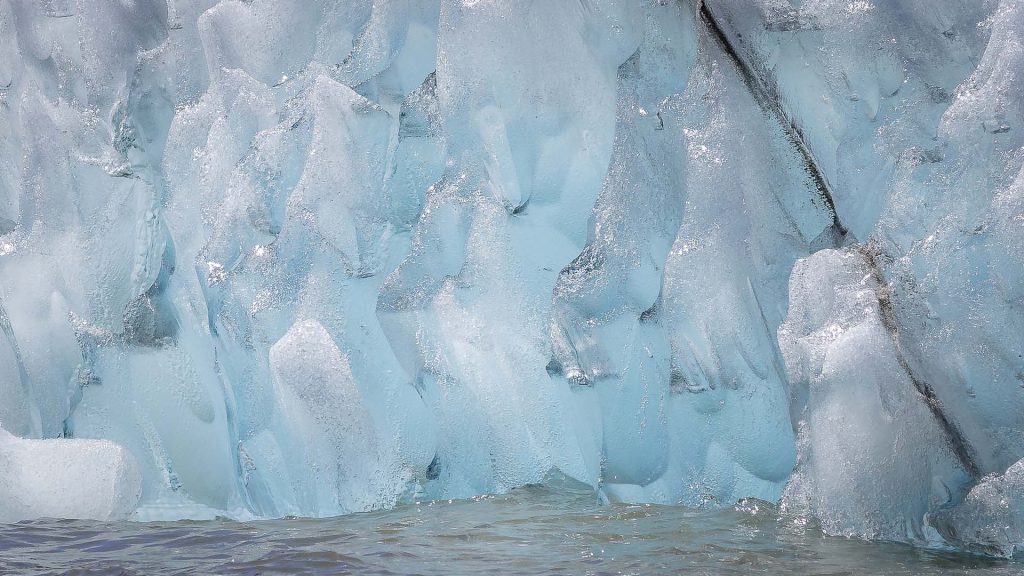I put the border on the abstract iceberg quilt. And then I put it up on the design wall, and I stared at it for a bit. And I went and did something else for a while, waited a couple of days, and then came back and stared at it a little while longer. I even took it with me quilt shop hopping this past weekend (the All New England Quilt Shop Hop is on!) and looked to see if I could find something that I liked better for the borders, but noooo. It just…didn’t work. I even disliked the extension of the water as the bottom border.
People who make all of the decisions about a quilt – fabric, borders, backing, binding – all at once utterly fascinate me. I have a pretty good visual imagination. I can see pictures in my head, and they usually look reasonably like reality. I can see all of the fabrics of a quilt top together. Sometimes I’m off – I was once in the middle of making a pieced quilt top and put some of the pieces up on the design wall to see how it would look, and I realized something was off. I ended up changing just one of the fabrics, and it was like night and day. So much better with that one different fabric! But for the most part, I pick the fabrics and I can see what it will look like in the end. To also pick the borders and the backing and the binding at the same time? Rarely. I want to see the whole thing together before I try to imagine a frame for it (which is what the border is). The binding usually ends up being the same as the border or very close to it, so I can’t decide that yet. And my ADHD brain doesn’t deal with the backing (which is out-of-sight-out-of-mind) until I get to the point where I need to quilt it – then I realize I don’t have it yet. My process bites me in the butt occasionally, but it mostly works.
I came back home after shop hopping, put the abstract iceberg quilt back on the wall, and stared at it again. And the longer I looked at it with the borders I’d chosen, the less I liked it still. So I spent tonight with a seam ripper and a halfway decent movie and took all of the borders off. Made a colossal mess, too, while I was at it. But I think I’m just going to quilt it without the borders and be done with it. I found a shimmery white that I was planning to use as the binding, and I think I’ll still use that, but the borders have been nixed entirely. And I’m actually really happy with that. It took me a while to get there, but that’s the process!
Also in front of a movie or two this weekend after I was done shop hopping, I finished up the Tracy Arm quilt. Here it is, in all of its finished glory!
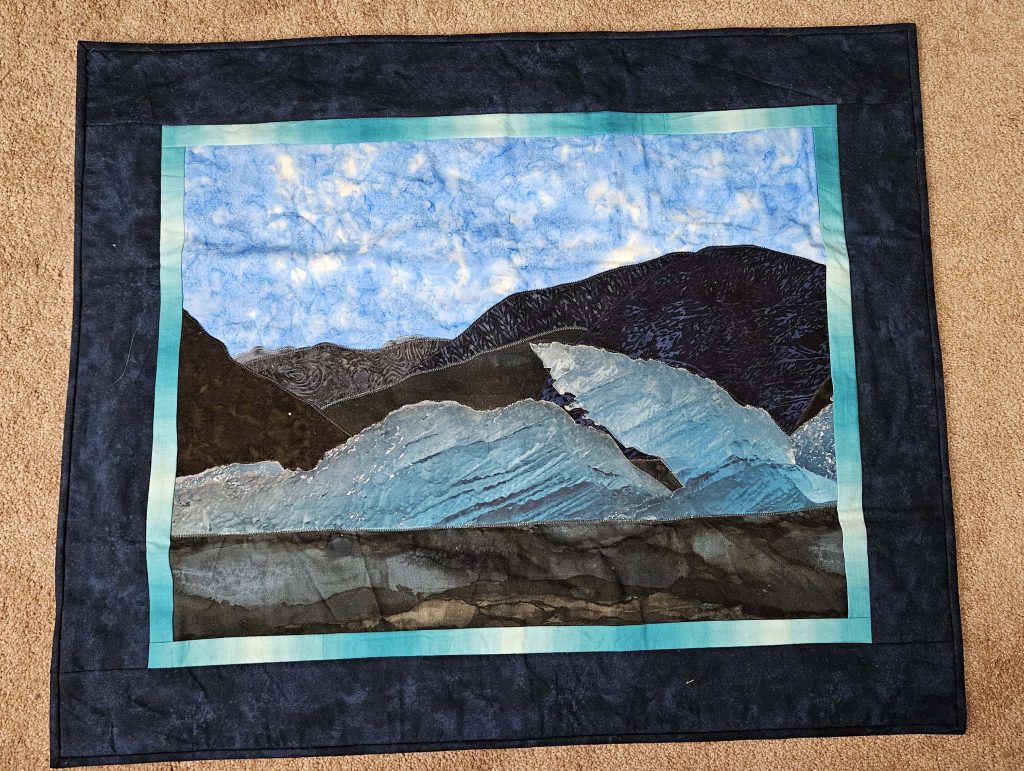
Once I clean all of the cat fur off of it, go buy a couple of dowels to use to hang it with, and figure out where to hang it, I’ll do something with it! As of right now, I’m not sure where I should put it. (For reference, I still have several cross stitch projects – professionally framed, of course – and several other pieces of art that I haven’t hung up yet despite having lived here for a little over two years. This could take some time.)
